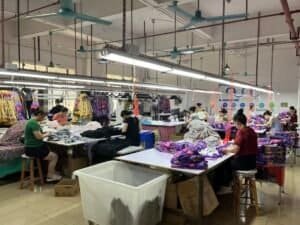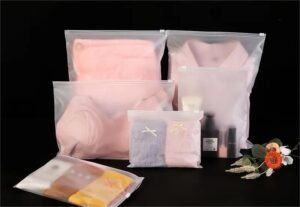China – the land of the Great Wall, delicious dim sum, and… fashion steals? That’s right! If you’ve ever marveled at how your closet manages to overflow yet your wallet doesn’t, you probably have the massive Chinese clothing market to thank.
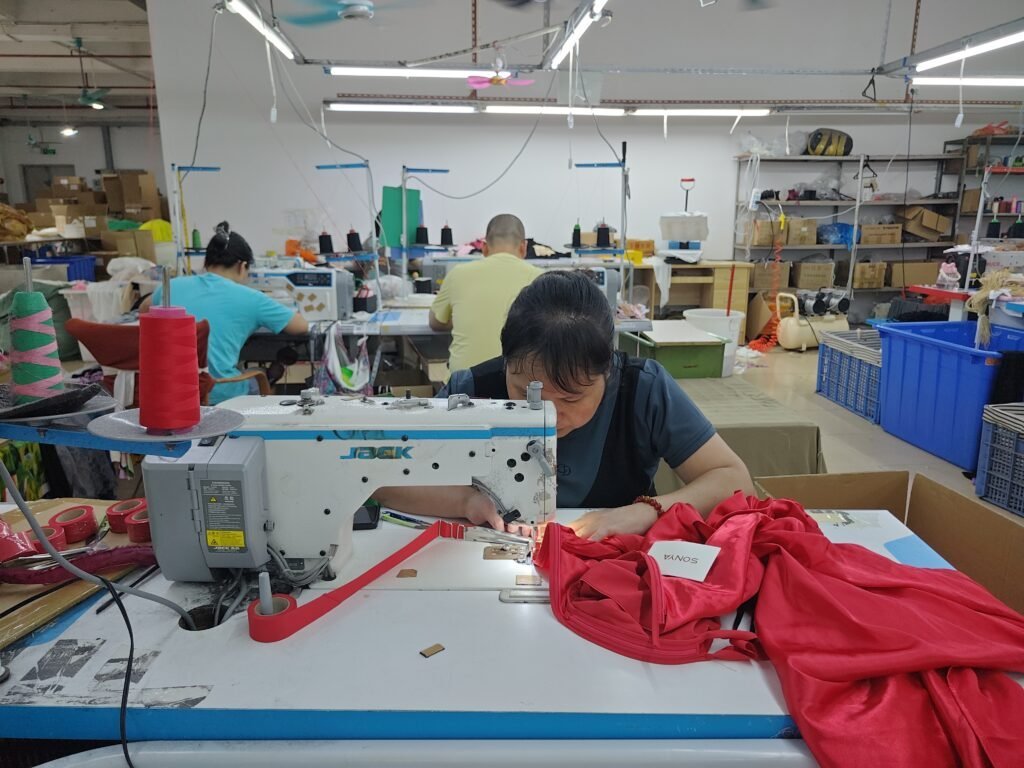
When it comes to the world of textiles and threads, China has been dressing the world affordably for decades. And why wouldn’t they? With the artistry, efficiency, and affordable production costs, importing clothing from China has turned many fashion enthusiasts into profitable entrepreneurs. Think of it as your ticket to joining the world’s most stylishly lucrative club!
But before you embark on this sartorial journey and start dreaming of swimwear shipments and sneaker stashes, a word of caution. The path to importing heaven is fraught with potential pitfalls. Think dodgy dealers, customs conundrums, and the occasional “That’s NOT the shade of blue I ordered!” moment. So, if you fancy keeping your hair intact by the end of this venture (and trust us, you do), a structured approach isn’t just recommended—it’s essential. Think of it as your guide to navigating the bustling fashion markets of China without tripping over a rogue mannequin.
Stay tuned, dear reader, because diving headlong without a plan is for amateur divers, not budding fashion moguls like yourself. Let’s get you suited up for success!
1. Research and Choose Your Clothing Niche: Let’s Get Specific!
Before diving into the massive ocean of clothing import, it’s good to remember: not all clothing is created equal. You don’t want to be the Jack of all jackets and the master of none. Picking a niche is essential. And remember, while it’s tempting to stock everything from tiaras to toe rings, specificity is your friend. Let’s break it down.
Fashion’s Fabulous Families
Ah, clothing niches, the ‘genres’ of the fashion world. From sweat-wicking sportswear for those ambitious New Year’s resolution gym-goers, to chic casual wear for the everyday Joe and Jane (or those “I only went out for groceries” photoshoots), and let’s not forget the illustrious luxury wear for the creme de la creme occasions. You see, by understanding these categories, you’re basically getting the “CliffsNotes” to the fashion library. Your challenge? Pick a genre, any genre. Just maybe not all of them at once unless you fancy a fashion frenzy.
What’s Hot in Your Hood?
Now, unless you’re a psychic with a crystal ball, you’ll want to assess the market demand in your region. Simply put: What are folks around you itching to wear? Do they lean towards cozy sweaters due to a chilly climate, or are they constantly on the hunt for the perfect beachwear? Remember, your inventory should resonate with the locals. After all, selling snow boots in the Sahara might be… well, an interesting business strategy.
Trend-Tracking: The Fashion Detective
Dedicate some time to play Sherlock Holmes in the world of haute couture. Grab that magnifying glass (or, you know, just your smartphone) and dive deep into current fashion trends. Are 80s neon colors making a comeback? Is everyone suddenly into bell-bottoms again? By identifying what’s on the rise, you can align your imports with what the global catwalk (or at least your local runway) wants. Fashion is ever-evolving, so staying updated ensures you’re not stuck in the sartorial Stone Age.
So, there you have it! The clothing world is vast and varied, but with a little focus, foresight, and fashion flair, you’re on your way to making waves in the wardrobe world.
2. Identify Reliable Suppliers: Sifting Through the Silk and the Synthetics
When it comes to importing clothing from China, it’s not just about what you buy but also who you buy from. Imagine diving into the world of clothing import, only to realize your “100% authentic silk” feels suspiciously like polyester. Yikes! Ensuring you have a trustworthy supplier is paramount. Let’s unravel the fabric of supplier selection.
Navigating the Online Bazaar: Alibaba & Global Sources
Websites like Alibaba and Global Sources can be your virtual treasure troves. They’re like the massive shopping malls of suppliers, but without the sore feet at the end of the day. But a heads up: just as in any mall, there are flagship stores and dollar shops. Always do your due diligence, read reviews, and perhaps start with smaller orders. Remember, quality over quantity – always!
Canton Fair: Where Business Cards Fly Faster Than Compliments on New Shoes
Trade fairs, like the famed Canton Fair, aren’t just opportunities to amass heaps of free samples (though that’s a definite perk). These fairs offer a tactile experience – feeling fabric textures, assessing stitch quality, and face-to-face negotiations. Plus, if a supplier spends money on a booth at a prestigious fair, they’re likely serious about their business. But still, keep those detective glasses on.
The Supplier Litmus Test
Before placing that mammoth order, ensure your chosen supplier isn’t just all talk and fancy fabric swatches. Ask for and call up references, perhaps even visit their factory if possible. Think of this as checking their report card before handing over your (or your business’s) lunch money. After all, reliability in the importing world is even more important than finding that perfect little black dress.
In the grand tapestry of importing clothing from China, your supplier threads are vital. Choose wisely, and you’ll weave a narrative of success and fabulous fashion. Onward to chic choices and silky-smooth transactions!
3. Sample and Quality Control: Because “Surprises” Should Be Reserved for Birthdays
Embarking on your importing journey without sampling is like diving into a pool with a blindfold on; there’s a good chance you won’t enjoy the outcome. As you’re about to learn, in the world of fashion, “sampling” isn’t about tasting cheeses, chocolates, or wines (sadly), but it’s just as crucial!
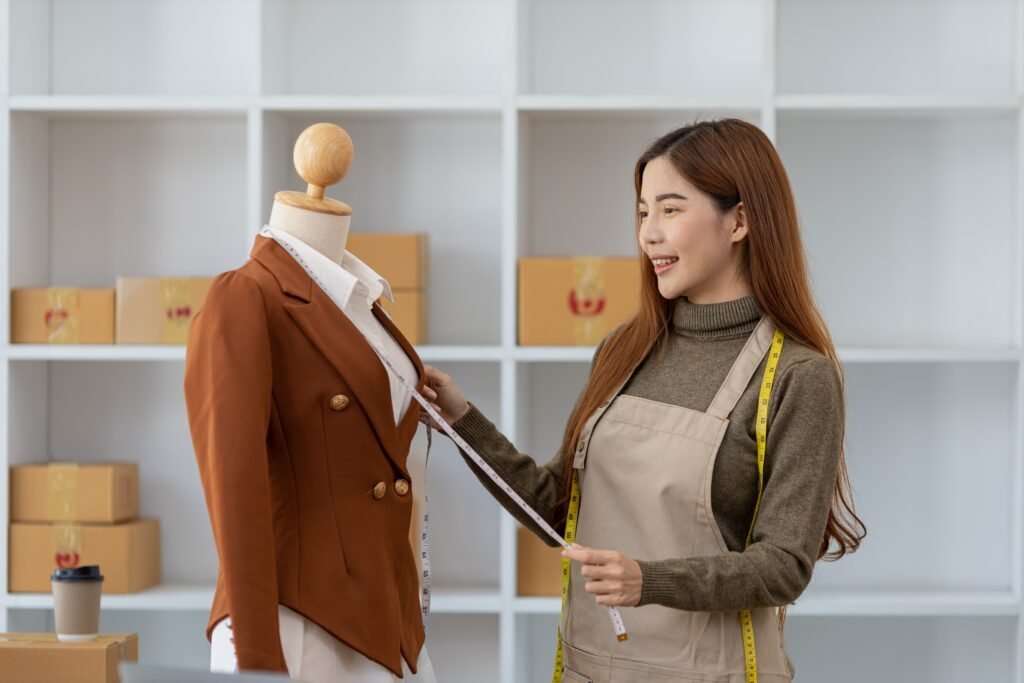
To Sample or Not to Sample? That’s Hardly a Question!
Ordering samples before buying in bulk is like the “try before you buy” of the fashion world. Imagine purchasing 10,000 polka-dotted ties only to realize they look less like chic retro and more like a clown’s wardrobe malfunction. A single sample can save you from a mountain of mishaps. So, before you say, “I’ll take 10,000 of those,” maybe start with, “Can I see one first?”
The Three F’s: Quality, Fit, and Finish
Once that precious sample lands in your hands, it’s time for some serious scrutiny. Check the quality: is it more resilient than a cockroach in a nuclear apocalypse or does it tear easier than a wet paper towel? Assess the fit: will it flatter its wearer or look like it’s waging war against human anatomy? And the finish: are those stitches tighter than your jeans after Thanksgiving or looser than a goose on the run? These are the questions, folks.
Constructive Criticism: The Sandwich Approach
So, the sample’s arrived and maybe it’s not quite the Mona Lisa of dresses or the Sistine Chapel of shirts. Fear not! It’s feedback time. Start with some praise (nice color, great fabric choice!), insert your critique (perhaps a zipper instead of buttons?), and end on a positive note (can’t wait to see the improved version!). It ensures your feedback is palatable and makes the process smoother than silk.
So, there you have it. Sampling is your safety net, your checkpoint, and your fashion compass, all wrapped in one. It might seem like an extra step, but in the grand fashion show of importing, it ensures your debut collection doesn’t trip on the runway. Strut on with confidence!
4. Understand Importing Regulations and Duties: Not All Fashion Rules are Made on the Runway
As you strut down the importing runway, you’ll realize that while fashion trends might change every season, rules and regulations are a bit more… persistent. The world of importing isn’t just about finding the sassiest sequins or the chicest chiffons; it’s also about navigating a web of paperwork, duties, and yes, the ever-daunting regulations.
License to Thrill: Getting Your Paperwork in Vogue
Before you start flooding your local market with fabulous Chinese imports, you might want to ensure you’re, you know, allowed to. This isn’t sneaking an extra cookie from the jar; this is serious business. Each country has its own dance when it comes to permits and licenses. So, put on your bureaucratic dancing shoes, and waltz through the necessary paperwork. Remember, it’s always better to be over-prepared than under-licensed.
Customs, Duties, and the Surprise Fashion Tax
Ah, customs. The unsung gatekeepers of the importing world. They’re not just there to admire your impeccable taste in apparel. No, they want their slice of the fashion pie, too. This comes in the form of duties and taxes. Always factor these into your costs; otherwise, your projected profits might just go out of style. So, while you’re budgeting for those stylish stilettos, don’t forget to set aside some for Mr. Taxman’s fondness for cashmere.
More Than Just a Trend: Safety and Quality Standards
Beyond looking fabulous, your imports need to be safe and compliant with local standards. Ensure that the sequined top doesn’t come with a free side of skin rash or that the child’s sweater isn’t a choking hazard. Familiarize yourself with the safety and quality regulations in your region. Because while neon might be a debated trend, safety? Always in style.
To sum it up, in the world of clothing imports, it’s not just about the fashion statements you’re making but also the regulatory ones. With the right licenses, a keen eye on duties, and a commitment to safety, you’ll be turning heads—and profits—in no time!
5. Finalize Pricing and Payment Terms: Where Fashion Meets Finance
If you thought fashion was all about fabrics, sequins, and the occasional feather boa, think again! It’s also about figures, finances, and fostering fair deals. Before you sign on the dotted line and confirm your order, let’s dive into the not-so-glamorous, but utterly essential world of pricing and payments.
Decoding Fashion’s Financial Lingo: FOB, CIF and More!
Let’s face it, terms like “FOB” and “CIF” sound more like secret handshakes than pricing models. But in the importing world, they’re your bread and butter (or, in fashion terms, your sequins and silk). FOB (Free On Board) means you’re only paying for the goods and the transportation to the port. Meanwhile, CIF (Cost, Insurance, and Freight) covers the cost of the goods, insurance, and all transportation. It’s a bit like choosing between buying a dress off the rack and getting one with alterations included. Know what you’re paying for!
The Art of Negotiation: Strutting Down the Bargain Runway
Securing a deal with a supplier is like playing a game of poker while wearing your favorite blazer: stay sharp and keep your cards close. Remember, everything is negotiable. Maybe you can’t change the fabric cost, but perhaps shipping or production times can be tweaked. Be fair, be firm, and always wear your best bargaining boots.
Paying the Piper (Safely): Navigating Overseas Transactions
Paying an overseas supplier isn’t as simple as tossing coins into a wishing well and hoping for the best. With tales of scams and slippery suppliers, you’ll want to safeguard your funds. Consider methods like Letters of Credit (a bank guarantee) or Escrow services (a third-party holding onto the funds until both parties meet the deal’s terms). It’s like having a fashion bodyguard for your finances.
When it comes to finalizing pricing and payments, it’s a blend of high-fashion flair with some good old-fashioned common sense. Navigate this world with caution, clarity, and confidence, and you’ll be making both fashion and financial statements in no time! Onward, savvy shopper!
6. Organize Shipping and Logistics: The Runway is Ready, but How Do You Get There?
Fashionistas and importing enthusiasts, gather round! We’ve picked out the styles, nailed down the prices, and now? It’s time to get those gorgeous garments on the move. But before you assume it’s as simple as sending a postcard, brace yourself for a behind-the-scenes look into the world of shipping and logistics. Lights, camera, action—let’s transport!

Air vs. Sea: The Ultimate Freight Face-off
Choosing between air and sea freight is like deciding between stilettos and sneakers—both have their place, and it’s all about what suits the occasion. Need your goods faster than a fashionista can say “That’s so last season”? Air freight’s your guy. But if you’ve got a bit of time and are watching the budget, sea freight might just float your boat. Weigh the pros, cons, and costs, and let the best freight win!
Finding Your Freight BFF: Navigating the Shipping Seas
In the wild waters of international shipping, you’ll want a trusty captain—or at least a reputable shipping company or freight forwarder. Think of them as your garment’s travel agents, ensuring they get the VIP treatment en route. Do your homework, read reviews, and perhaps consider recommendations from other fashion-forward folks. After all, you wouldn’t trust just anyone with your designer handbag, would you?
Tracking: Not Just for Fitness Fanatics
Once your shipment’s on the move, resist the urge to sit biting your nails or twirling your hair in anxious anticipation. In this digital age, tracking isn’t just for counting steps or pizza delivery. Use shipment tracking systems to keep an eye on your cargo. It’s like watching a reality show where your imported clothes are the stars—and spoiler alert: the season finale involves a successful delivery!
Shipping and logistics might not have the glitz and glamour of a fashion week after-party, but it’s a critical scene in the importing saga. With the right choices, reliable partners, and a dash of patience, your collection will hit the local scene faster than a new trend takes off.
7. Market and Sell Your Imported Clothing: From Closet to Cash Register!
Alright, budding fashion moguls, we’ve navigated the treacherous waters of importing, from sampling sequins to shipping shenanigans. Now comes the pièce de résistance: selling your sartorial selections. And while you may think this is as easy as a runway model’s strut, it takes a little more pizzazz and planning. Grab your marketing hat—it’s showtime!

Branding and Packaging: First Impressions Count, Darling!
In fashion, as in life, it’s not just what’s inside that counts—it’s also about the wrapping. Your imported clothing might be the bee’s knees, but if it’s presented in lackluster packaging, it might just end up in the clearance bin. Consider your target audience. Are they eco-conscious millennials? Opt for sustainable packaging. Targeting luxury aficionados? Gloss, gold, and glam might be the way to go. Remember, packaging is the opening act for the main event: your clothing.
The Runway to Riches: Marketing Your Garments
The world won’t know about your fabulous finds unless you shout it from the rooftops—or at least plaster it across social media. For online buzz, think Instagram photoshoots, Facebook ads, and maybe even a TikTok fashion challenge or two. But don’t dismiss the offline world. Pop-up shops can be like those surprise gigs from your favorite band—unexpected but oh-so-exciting. Mix and match strategies until you find your groove.
Hook, Line, and Sinker: Enticing the Masses with Promotions
New to the scene? Sometimes, you’ve got to give a little to get a lot. Consider offering discounts or promotions to make a splash in the market. Buy-one-get-one deals, early bird specials, or “first 50 customers get a free [insert trendy accessory here]” can be just the bait you need. It’s like giving out free samples at an ice cream parlor—once they get a taste, they’ll be back for the whole scoop!
And there you have it, from China to closet, a full fashion journey! Now, with the right marketing moxie and a sprinkle of sales savvy, your imported clothing line will be flying off the shelves. After all, in the world of fashion, one day you’re in, and the next day… well, with this guide, you’ll always be in. Werk it, entrepreneur!
From China with Love – The Wrap-Up on Wrapping Up Your Import Biz
Well, fashion aficionados and import innovators, we’ve walked through the seven steps of importing clothing from China as if we were prancing down the catwalk at Paris Fashion Week. But before we bid adieu, let’s take a moment to reflect on our ensemble of insights.
- Niche Know-how: Remember, you’re not just shopping for yourself. It’s about what the market wants. Sporty? Casual? Ultra-luxe? Pick your style lane and cruise with confidence.
- Supplier Savvy: It’s not just about who has the shiniest buttons. It’s about trust, reliability, and not getting ghosted after sending a hefty payment.
- Sample Serendipity: Always, always, ALWAYS order that sample. It’s your fashion appetizer before the main course. Bon appétit!
- Regulation Rundown: Licenses, duties, and compliance aren’t just bureaucratic jargon—they’re your ticket to importing without impediments.
- Pricing and Payment Prodigy: With great power (or fabulous fashion) comes great responsibility. Nail those numbers and keep your finances looking as sharp as your attire.
- Logistical Labyrinth: Ship smart. Whether by sea or sky, ensure your precious cargo arrives not just in style, but on time.
- Marketing Majesty: The world needs to see your curated collection. Shout, share, and sell with all the flair you’ve got!
And as we button up this guide, remember, like any great fashion piece, it’s all about the details. Approach the importing process with the same patience you’d have while waiting for that must-have item to go on sale. Mix in a hearty dose of diligence, and voila! You’re poised for success. So, keep your heels, head, and standards high. After all, the world of importing clothing awaits your fabulous flair!
To the future fashion moguls, may your imports always be in vogue and your determination always in stock. Strut forth and conquer!
Got Threads on Your Mind? Let’s Chat!
Hey there, fabulous reader! We’ve unzipped the secrets of importing clothing from China, but now, we want to hear from you. Got burning questions or perhaps just a burning desire to share your own experiences? Slip into our comment section below—it’s open 24/7, and we promise it’s as welcoming as your favorite cozy sweater.
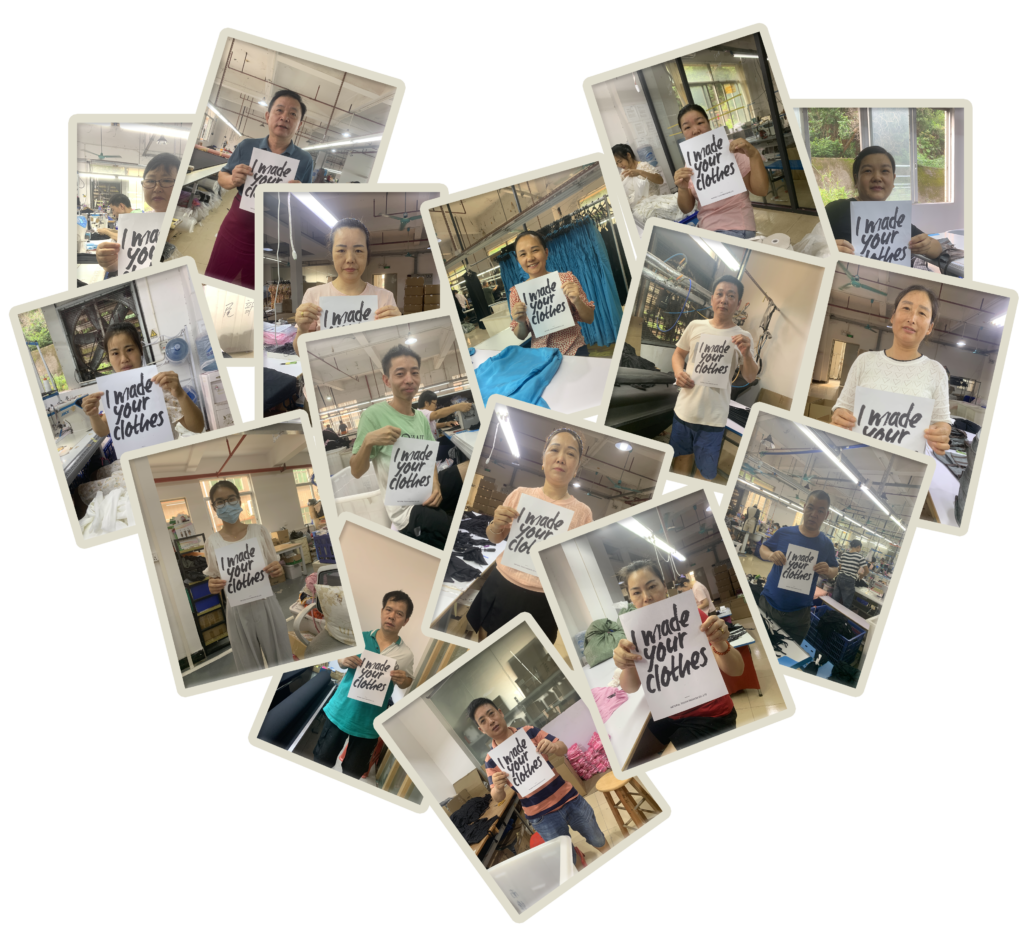
Oh, and a teeny, tiny (but super important) humble brag: not only are we pros at serving up import insights, but we’re also a top-tier Chinese garment manufacturer. With 15 sparkling years in the foreign trade of garments, we’ve stitched, sewed, and sold our way to expertise. So, if you’re feeling the collaborative vibes, we’re totally here for it. Whether it’s a question or a potential partnership, give us a shout!
Dive into the world of fashion trade with us. Because when you dress for success, it’s even better when you have a trusty sidekick who knows the ropes. Ready to thread this needle together? Reach out, and let’s make fashion magic happen!
FAQ: Importing Clothing from China Unstitched
China offers a vast array of clothing niches, from sportswear to luxury. The "best" niche largely depends on your target market, their preferences, and current fashion trends. Do your research and pinpoint what's in demand in your region.
Great question! Always verify supplier credentials, ask for references, and check reviews. Platforms like Alibaba offer 'Gold Supplier' statuses, and attending trade fairs can give you face-to-face assurance.
While not mandatory, it's highly recommended. Think of it as trying before buying. You'll get a hands-on feel for quality, fit, and finish. No unpleasant surprises!
Answer: FOB (Free on Board) means the seller covers costs until the goods are onboard the ship. From there, the buyer takes over. CIF (Cost, Insurance, and Freight) means the seller covers costs, including sea freight and insurance, until the goods reach the destination port.
"Better" is subjective. Air freight is quicker but pricier. Sea freight is more cost-effective for bulk shipments but takes longer. Evaluate based on your budget and urgency.
Diversify! Utilize online platforms, host pop-up shops, and offer initial promotions to catch eyes. Remember, in the world of fashion, visibility is key.
Sometimes. This is why understanding duties, taxes, and potential customs fees is crucial. Always factor in a little wiggle room for unexpected charges.
Absolutely! With our 15 years in the garment trade, we're here to help, collaborate, or just chat fashion. Drop us a line!


